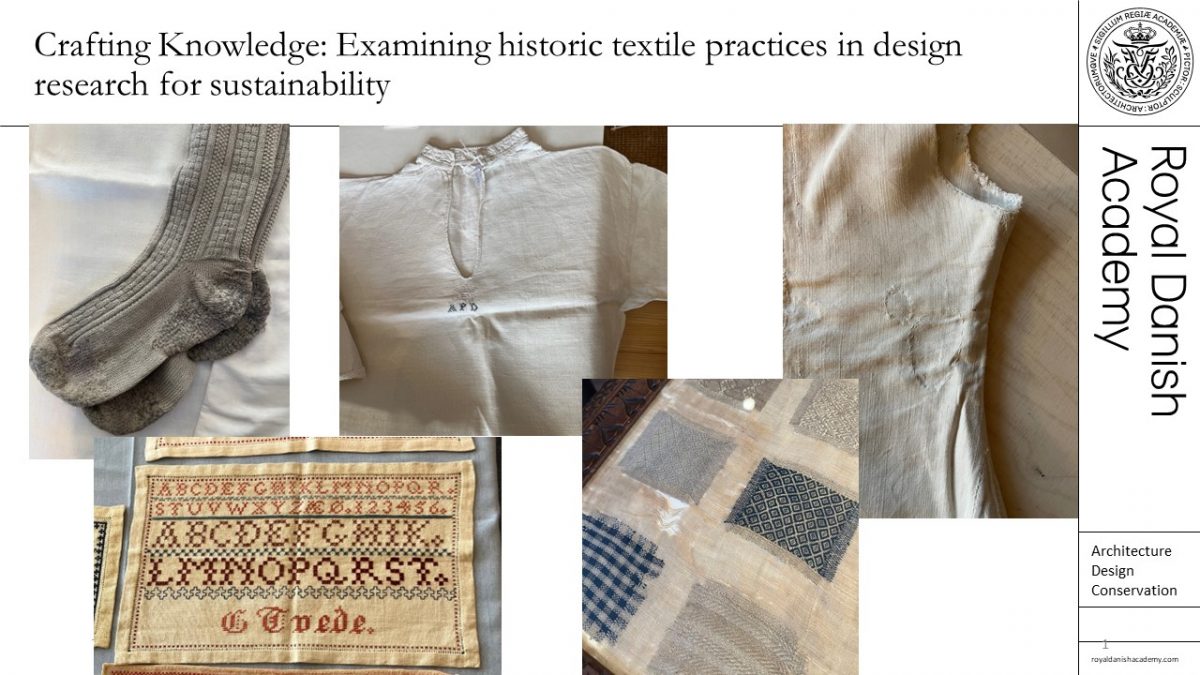PhD Masterclass on Wardrobe Research

13th of April this year an online PhD masterclass was conducted within the scope of the CHANGE work package 5. The masterclass was online and involved the currently eight PhD students working with the wardrobe method or closely related methods and had the purpose of facilitating exchange of shared methodological implications, involved issues of interest, and the build-up of research network for young talents.
The 2-hour masterclass was informed by rapid pecha kucha type presentations of ongoing work and pre-formulated questions to facilitators and peers, and the workshop was hosted by Else Skjold who is PI of work package 5 of the CHANGE project. This work package involves, among other things, consolidation of existing wardrobe research and talent recruiting for new young research talent. Below is elaborated how the three themes cross-fertilized and interesting discussion that will hopefully just be the beginning of future work across the CHANGE partners to come. The presentations and discussions involved three selected topics emerging out of the ongoing PhD studies which were:
- Wardrobe Practices
- Secondary Use
- Textile Techniques and Use
Wardrobe Practices
How can we understand the interactions between wearers and garments within the specific site of the wardrobe both at micro- and macro-level? This has always been the core pillar of wardrobe research since it was established in the mid 2000’s, and it was very interesting to see how young scholars pick up on this and formulate new ideas within the scope of their thesis work. A particular strong focus on local dress cultures and its effect on individual wearers were highlighted in this session, that brought about fruitful discussions on situated and contextual dress practices and how they are affected by climatic, cultural, economic and functional parameters.
Secondary Use
How can wardrobe research methods cast a light on the types of mechanisms and value creation that takes place between wearers and their vintage- and secondhand garments? This line of research is an interesting extension of ‘first generation’ wardrobe researchers’ work, in that it investigates what actually happens with garments beyond first use. This way it speaks back to concepts such as design for longevity/circularity and what they entail in the lifespan of garments between generations, body types, dress cultures and shifting ideas of fashion over time. And furthermore, how that informs practices of acquiring and discarding – an issue that has also been central within wardrobe research right from early pioneer studies in the early 1990’s.
Textile Techniques and Use
What types of competences used to be involved in maintaining personal wardrobes historically and how can we learn from this in an era with overproduction and overconsumption? Mending, repair and repurposing are all practices that have been deeply integrated in historical practices of use, as resources were typically scarce and costly – as opposed to now where much knowledge has been lost due to cheap, replaceable products and short use phases. This session looked into wardrobe maintenance practices of embellishment, print or other textile techniques for prolonging the lifespan of clothing, for projecting activist ideas, and generally for informing future practices and aesthetics of scarcity.
The masterclass will be repeated during the fall of 2023.